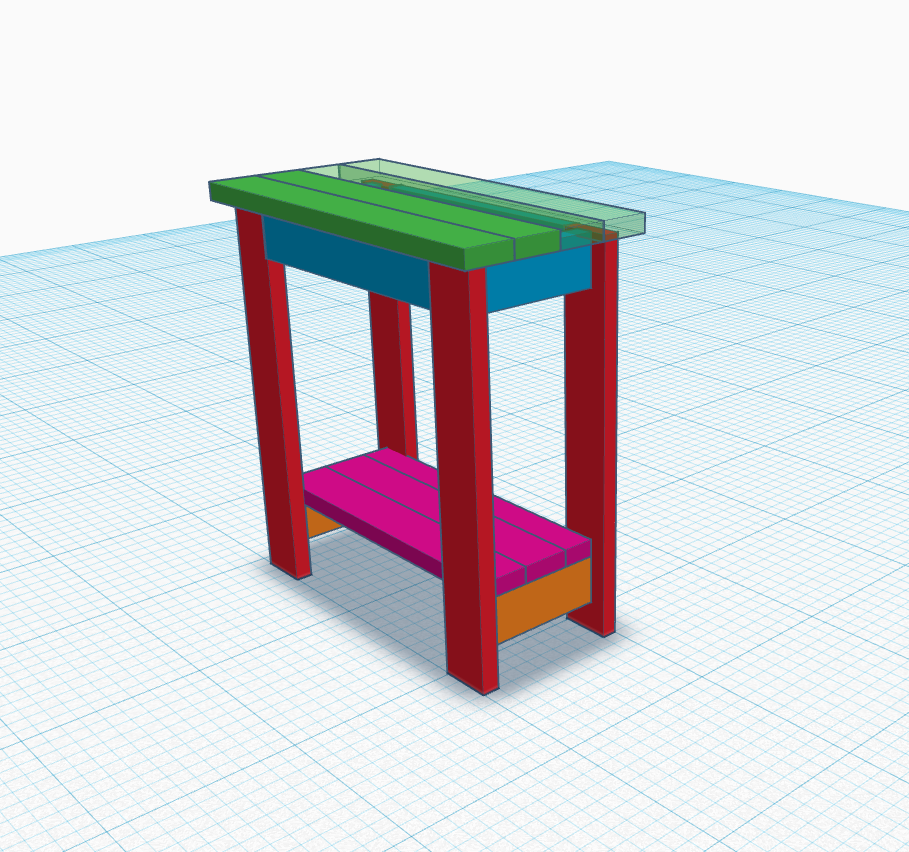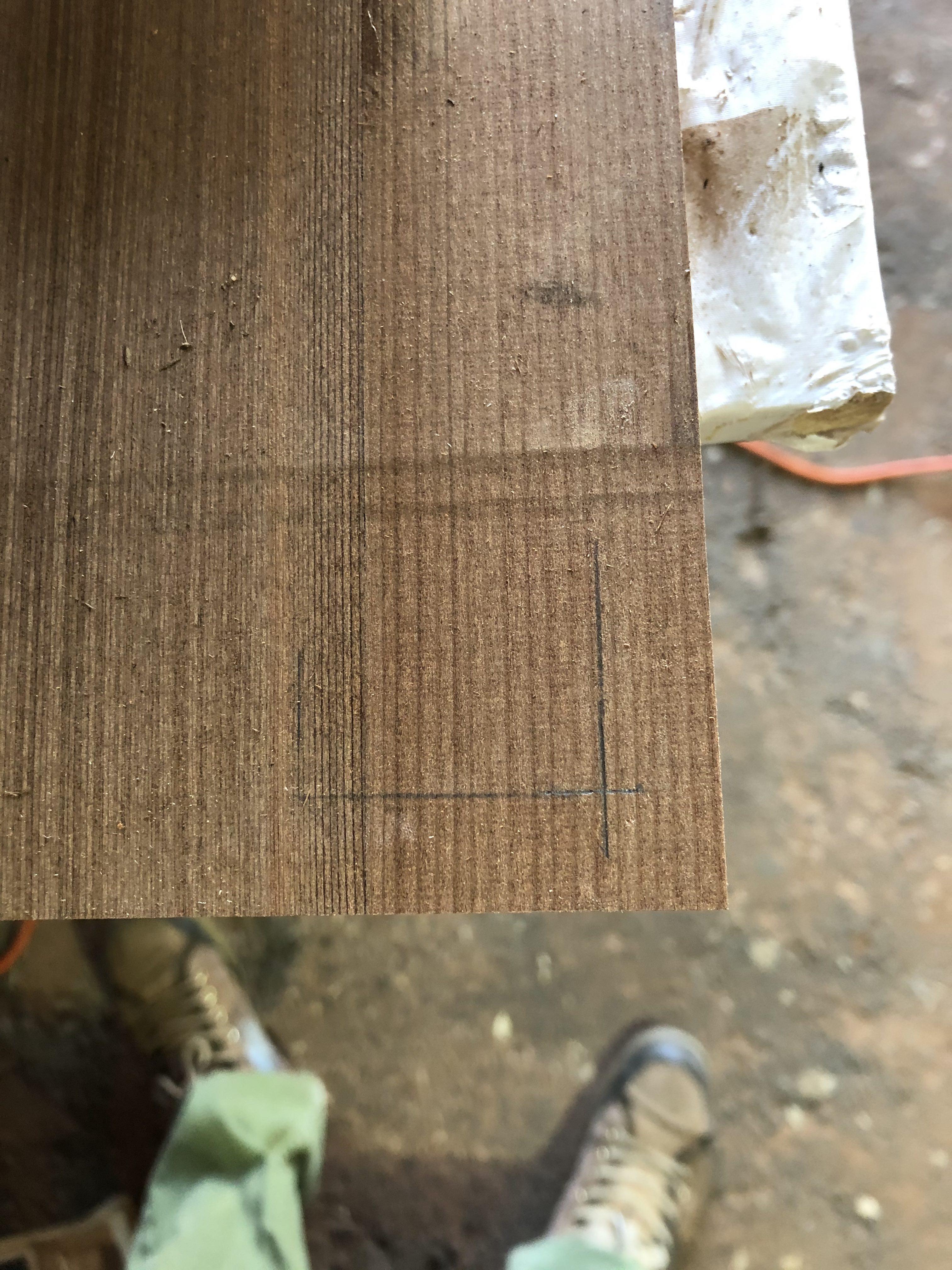Reclaimed Wood Farmhouse End Tables
by alawgonzales in Workshop > Woodworking
2519 Views, 47 Favorites, 0 Comments
Reclaimed Wood Farmhouse End Tables

If you have seen my other posts, you probably are wondering why this dude is so obsessed with reclaimed redwood. Two answers: Trash to Treasures & Woodworking Contests. #Twobirdsonestone Though I found out later you can't double dip on contests...Regardless!
This round, I wanted to show you how I build a set of very simple end tables. I made mine with reclaimed wood, but you could easily do with project with normal lumber. This is a very approachable project that most anyone could tackle as their first furniture!
Supplies

Since I was working with the limitations of the reclaimed lumber I milled, all of my boards were 1x3's. Technically just shy, but who's counting?
If you are following my design you'll need:
- 1x3's
- 4 - 24"
- 2 - 16"
- 4 - 8"
- 3 - 20"
- 2x4"
- 4 - 24"
- 5/16" Dowels
- Finish (I used lacquer)
- Glue
- Sandpaper
In addition, some of the other supplies I recommend:
- Table saw
- Drill
- Hand saw
- Clamps
- Planer or Hand Plane
Design


Shout out to Tinkercad again for the free software that allowed me to mock these up in 3D really easy! You can check out my design here.
I wanted an easy rustic farmhouse look to go with the reclaimed lumber I was using.
Cutting/Prepping the Lumber
For myself, I had a lot of various ~3x3 posts that I needed to mill to size.This meant ripping them down into 1x3's.
As with any furniture piece, particularly ones where you have tabletops, it is a good idea to plane them as well. This way you know all of the pieces are exactly the same size.
Since my lumber was cut + planed, there was little need for me to sand it. But if you have rough lumber, now would be the time to sand it smooth.
Glueing the Tabletop/shelftop


Though I literally said about 10 words ago to cut/plane your lumber already, if you noticed in the photo above, I obviously didn't follow my own advice. You'll notice that the tabletops are not cut-to-size or planed. Since these tops were small, I decided to cut them flush after gluing and tidy up any unevenness in the planer after gluing.
For you first time gluers:
- Prep your pipe clamps roughly to the right width
- Line up your boards (alternating the "U's" of the end grain to minimize warping)
- Place glue down the sides
- Clamp! (Just "common sense tight" as my grandpa used to say)
Tip: I have some more detailed photos/instructions in my first article.
Measure 237 Times, Cut Once



Now that your tabletops have been cut/planed to size, it's time to prep the assembling of your furniture!
This should already be accommodated for in the aforementioned design. But plans of mice and men always run astray so I mark and double check.
Dowel centers are a great way to line up dowels and their respective holes. Don't be a dummy like me though and glue your dowels in first. Drill your first set of holes, place the centers in the holes, and then use them to mark the other side.
Pro $ Tip: If you want to save money on dowel pegs, simply buy the dowel size you desire and cut them to length yourself. One $.50 dowel rod makes a lot of mini dowels!
Clampathon

After drilling out the dowel holes you:
- Glue dowels into holes
- Push short sides together (blue circles)
- Connect/Push long sides together (red circle)
Clamp clamp away!
Note: I have rested the table top on top in this photo, but we'll be actually attaching that later.
...or Twice

Somehow, despite every effort not to, mistakes are made. In my case, the table aprons were not flush with the legs after glue up. This led to gaps between the tabletop and the aprons.
Luckily I have several small strips of wood from other projects/trimming wood for this project. I simply glued them on top and then used a hand plane + sandpaper to make them flush.
Fastening Tabletop & Shelf

While generally you should attach table tops in a manner that allows them to expand and contract, considering the size of this tables, I was not too concerned. I went with normal 1" "L" brackets.
There is not right answer for placement. For the table top chose to put two on the long sides and one on each end. For the shelf I put two on either end.
Finishing Touches

Look at that form!
Joking aside, now is the time to do any touch up sanding.
Pro tip #1: I learned a cool trick, which is to sand small angles on the bottom of your furniture legs to reduce splintering (AKA tear out).
Wobbly legs? Pro tip #2: Set your table saw ultra low (1/32-1/16") and place your table on top. Using the flat surface of your table saw, shave off the high spots! Here's a link to a video demonstrating this.
Finishing!

For myself (in general) and this wood (in specific), I have come to like accentuating the natural color of the wood. If you were working with something more plain like pine, you might want to add a layer of stain before applying your protectant.
I used a satin lacquer finish, its more traditional, doesn't require sanding in between layers, and usually dries in less than an hour!
Done!


So at this point you should be done! You have successfully converted whatever wood you had into some slim nice side tables for your couch or home.